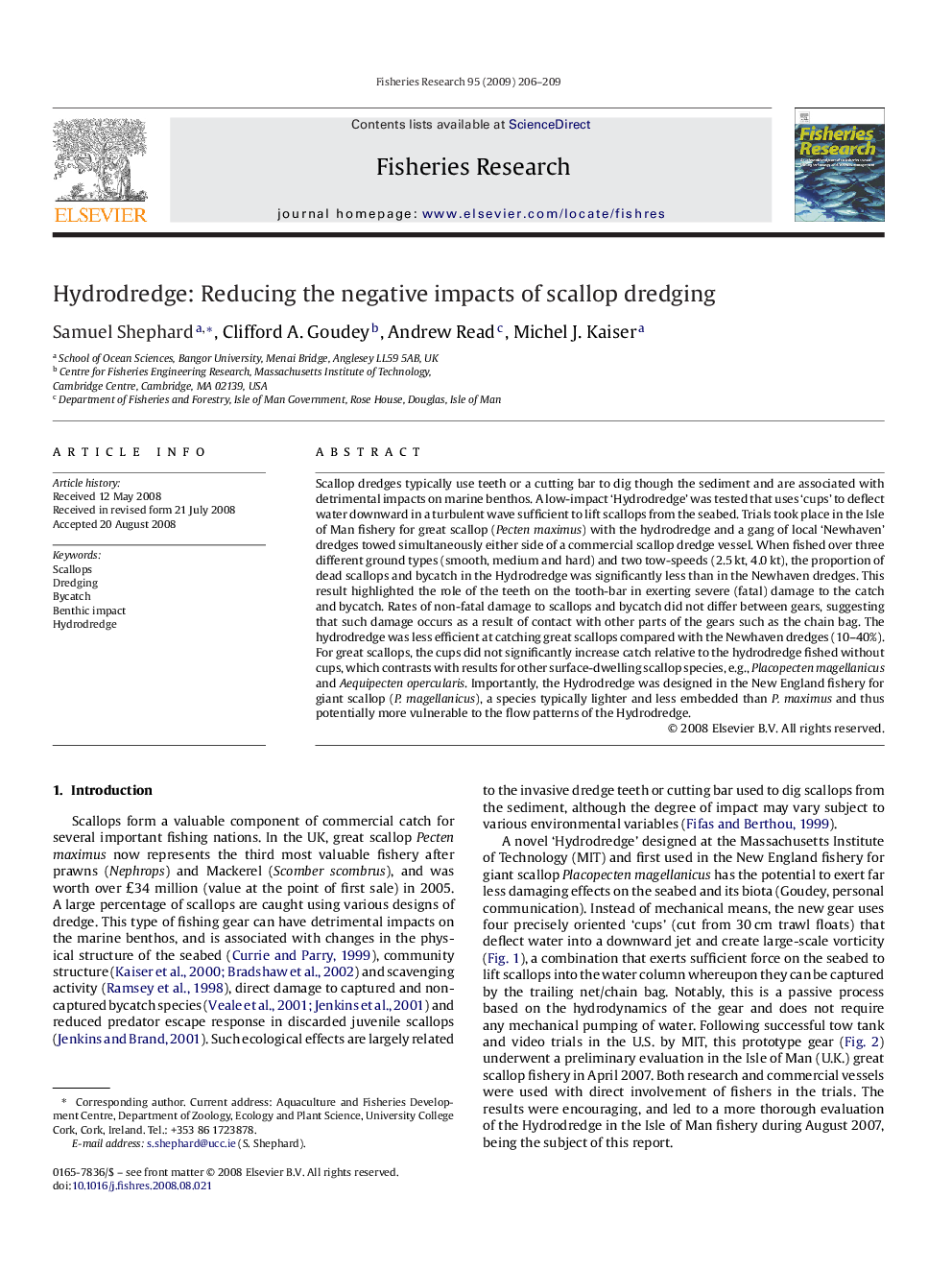| کد مقاله | کد نشریه | سال انتشار | مقاله انگلیسی | نسخه تمام متن |
|---|---|---|---|---|
| 4544154 | 1626857 | 2009 | 4 صفحه PDF | دانلود رایگان |

Scallop dredges typically use teeth or a cutting bar to dig though the sediment and are associated with detrimental impacts on marine benthos. A low-impact ‘Hydrodredge’ was tested that uses ‘cups’ to deflect water downward in a turbulent wave sufficient to lift scallops from the seabed. Trials took place in the Isle of Man fishery for great scallop (Pecten maximus) with the hydrodredge and a gang of local ‘Newhaven’ dredges towed simultaneously either side of a commercial scallop dredge vessel. When fished over three different ground types (smooth, medium and hard) and two tow-speeds (2.5 kt, 4.0 kt), the proportion of dead scallops and bycatch in the Hydrodredge was significantly less than in the Newhaven dredges. This result highlighted the role of the teeth on the tooth-bar in exerting severe (fatal) damage to the catch and bycatch. Rates of non-fatal damage to scallops and bycatch did not differ between gears, suggesting that such damage occurs as a result of contact with other parts of the gears such as the chain bag. The hydrodredge was less efficient at catching great scallops compared with the Newhaven dredges (10–40%). For great scallops, the cups did not significantly increase catch relative to the hydrodredge fished without cups, which contrasts with results for other surface-dwelling scallop species, e.g., Placopecten magellanicus and Aequipecten opercularis. Importantly, the Hydrodredge was designed in the New England fishery for giant scallop (P. magellanicus), a species typically lighter and less embedded than P. maximus and thus potentially more vulnerable to the flow patterns of the Hydrodredge.
Journal: Fisheries Research - Volume 95, Issues 2–3, 14 January 2009, Pages 206–209